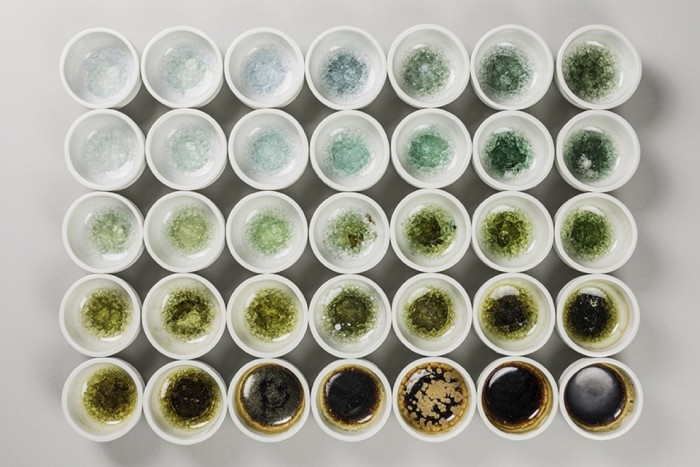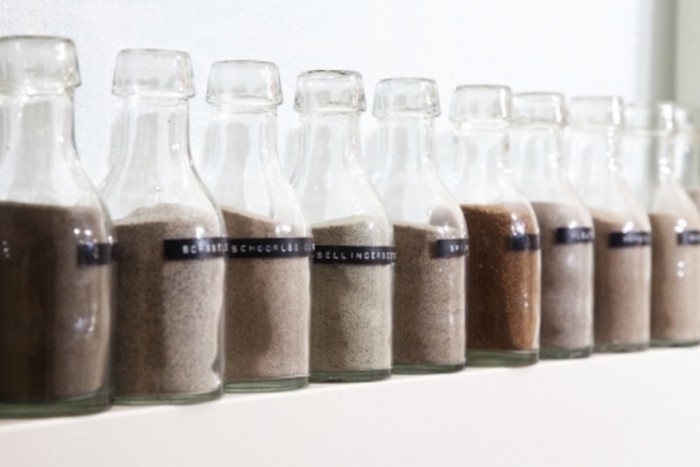When the terms sustainability, eco-friendly and environmentalism fly across our timelines often the first things that come to mind is to reduce plastic waste, save the animals and use solar energy.
There are mass marketing strategies dedicated to getting people to cut down on single use plastics and to reduce, reuse and recycle just about anything. However, there appears to be a major gap in this global phenomenon; one resource that everyone seems to be forgetting about. Sand.
Much of the world that we know and recognise has been made using sand, from the major skyscrapers that decorate our skylines to the delicate glass ornaments that we collect. Billions of tons of sand are mined every year in order to create the world that we live in. After air and water, sand is the third most used resource in the world.
However, like Dutch designer and former Design Indaba speaker Lonny van Ryswyck and her partner Nadine Sterk discovered, sand was only being mined from places like riverbanks, beaches, lakes and ocean floors.
The sand found in major deserts like the Sahara and the Arabian deserts are unsuitable for things like construction due to these sand particles being smoothed over by the wind. In order to get the concrete and cement to accurately bind together, the sand particles need to be more angular, much like jigsaw pieces.
As a result, major natural environments and ecosystems are being completely destroyed in order to keep up with the demand for sand.
The construction industry is one of the main culprits in this crisis. The built environment is largely made up of concrete. Concrete is made up of 15% water, 10% cement (lime and clay) and 75% sand.
According to an article by Business Insider, between 2011 and 2013 China was said to have used more concrete than the United States did throughout the entire 20th century.
Places like Dubai used sand, imported from Australia, to build extravagant locations like The Palms. As a result, scientists predict that we are leaning towards a drastic scarcity of the resource.
The sand extraction industry is estimated to be worth about $70 Billion and while governments have attempted to put restrictions in place, what has arisen is major black-market sand industries.
Illegal sand mining has destroyed dozens of islands surrounding Indonesia and has also resulted in the formation of organisations like the “Sand Mafia”, one of India’s biggest criminal organisations.
Designers like Ryswyck and Sterk are on a quest to prove that there are other sources of sand available for mining.
Together they spent six years digging up different types of clay around the Netherlands and creating a sand and clay map of the region. The sands were made up of different colours and textures, depending on their surrounding environments. They used the different sand samples to create home and kitchenware and to make people aware of the different uses and values of sand. Ryswyck spoke about the work they’re doing at Design Indaba Conference 2018.
Their project A World of Sand encourages people to send through sand samples from around the world. Using these samples, they melt the sand down exposing the various colours and textures of the sand from around the world. Once melted, the designers create a variety of coloured glassware, showing the capabilities of different types of sand as well as highlighting the scarcity issue. Their research over the years exposed them to the scarcity of sand and the overming that was taking place.
The UN suggests people look for alternative measures to prevent the overmining of sand. Glass bottles can be ground back down into sand thus recycling the material. Things like recycled plastic has been used to replace asphalt roads or bamboo and rammed. earth in order to replace building materials. While recycling concrete is considered expensive it is an alternative to the current crisis situation.
Read more:
Colors of the Earth: Ghana's incredible, rammed earth walls
Future forms of concrete, plastic could be both sustainable and eco-friendly









